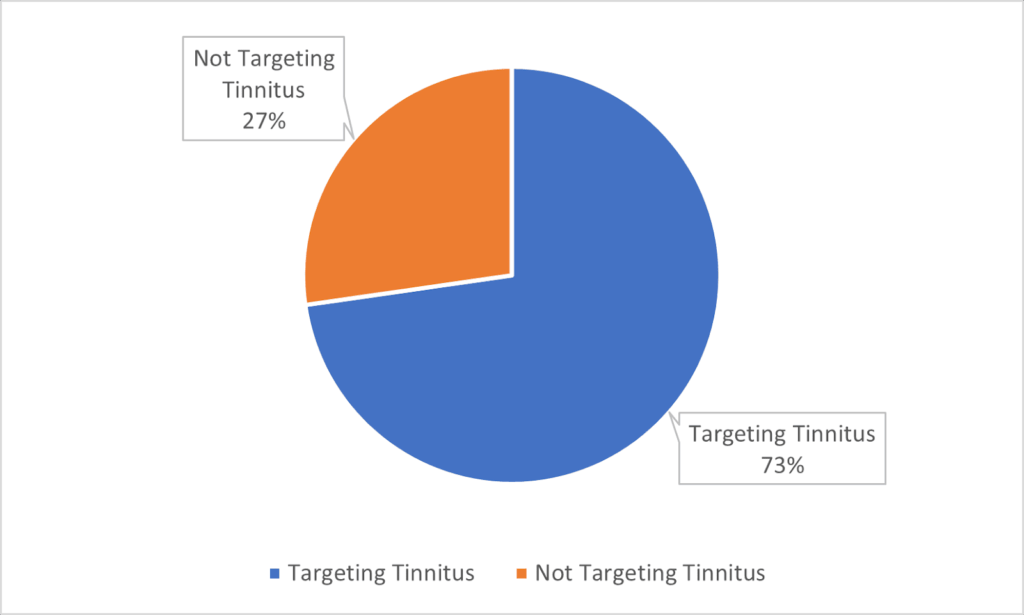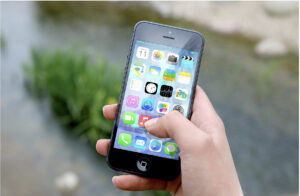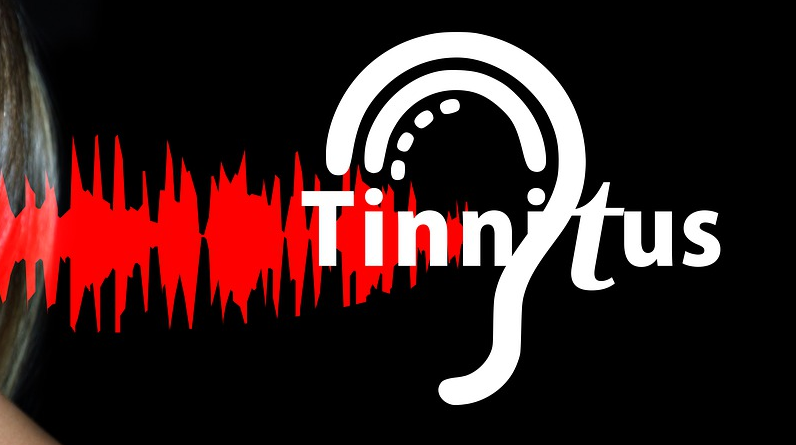Survey of Smartphone Applications for the Subjective Hearing Disorder of Tinnitus
Survey of Smartphone Applications for the Subjective Hearing Disorder of Tinnitus
Siyuan Cheng, School of Information Sciences, University of Illinois at Urbana-Champaign
Siyao Cheng, School of Information Sciences, University of Illinois at Urbana-Champaign
Gibbeum Kim, Department of Speech and Hearing Science, University of Illinois at Urbana-Champaign
Namitha Jain, Department of Speech and Hearing Science, University of Illinois at Urbana-Champaign
Fatima T. Husain, Department of Speech and Hearing Science, University of Illinois at Urbana-Champaign
Deana McDonagh, School of Art & Design, University of Illinois at Urbana-Champaign
Introduction
Approximately 14% of the general population (Jarach et.al., 2022) experience phantom or illusory sounds that may be considered unpleasant, known as tinnitus. Tinnitus can affect concentration, sleep, communication and result in heightened stress, anxiety, and depression, but an effective treatment remains elusive. A promising treatment option, one that has the support of experts from various domains, is that of smartphone applications for mitigating tinnitus-related symptoms (Mehdi et al., 2020). Individuals with tinnitus already utilize these apps to help them sleep better, reduce anxiety, and release their stress (Sereda, 2019). However, most of the apps are not specifically designed for reducing tinnitus-related symptoms. Some other shortcomings of the apps include limited tinnitus treatment options (Sereda, 2019) and are available only to users in certain geographic locations (Mehdi et al., 2020). These problems have attracted the attention of scholars in various fields, in particular the field of information science. To work around the shortcomings of the existing tinnitus apps, we propose implementing improvements from an information science perspective to enhance user experience.
—existing applications for treating tinnitus are still in the early stages—
Targeted Tinnitus vs. Non-targeted Tinnitus Apps
As a multidisciplinary and international team of researchers, we collect and analyze data through an international lens. We conducted tinnitus-related (e.g., tinnitus, hyperacusis, hearing loss) keyword searches on Google Play and the Apple App Store in China, South Korea, UK, and USA to locate relevant apps. As a result, we found and reviewed 44 tinnitus smartphone apps, including 10 from China, 9 from South Korea, 10 from the United Kingdom, and 15 from the United States.
To understand whether an app designed for tinnitus can meet users’ needs, we categorized the reviewed apps into two groups: 1) Apps designed for adults with tinnitus, and 2) Apps not designed for tinnitus but individuals with tinnitus still use them. As shown in Figure 1, most smartphone apps used for tinnitus-related reasons are indeed designed for people with tinnitus. Surprisingly, 27% of smartphone apps were not specifically developed to help users with tinnitus but are still used by them for different purposes, such as aiding sleep. We found that this is because many people with tinnitus report sleep problems, which is one top complaints of individuals with tinnitus (Husain, 2021). Since tinnitus-focused apps do not have sleep management options (Piskosz, 2020), people searching for tinnitus solutions are forced to find other apps that could deal with their sleep issues. Additionally, most of current tinnitus apps only provide one treatment option; we recommend that the tinnitus apps be tailored to satisfy users’ unique symptoms by offering more treatment options.

Tinnitus Apps on iOS Platform vs. Android Platform
Research on the user experience of tinnitus apps in one country cannot be generalized to other countries because their user preferences may differ from country depending on their cultural background, social norms, etc. (Taylor, 2023). Here, we reviewed the distribution of tinnitus-related app platforms in different countries (China, South Korea, UK, and USA) to measure and summarize their user preferences. As shown in Figure 2, the United States and the United Kingdom have more iOS smartphone applications for tinnitus treatment; especially, the USA has 15 iOS-compatible apps. However, the review also showed that China and South Korea have more Android smartphone apps for tinnitus treatment. This suggests that smartphone app platform distribution may vary across different countries. Therefore, we recommend that tinnitus apps be made available on both platforms.

Conclusion & Further Study
 Tinnitus has gradually attracted more attention from scholars, but for adults with tinnitus, the existing tinnitus smartphone apps do not offer multiple treatment options. Although these apps alleviate people’s some symptoms of tinnitus, the existing applications for treating tinnitus are still in the early stages. Therefore, it is challenging for these apps to keep pace with users’ ever-changing needs. We forecast an emerging demand for applications available on both platforms and additional features such as sleep management. Due to language barriers, we did not review existing tinnitus-related apps in other countries (e.g., Japan, Denmark). We plan to add new countries to our ongoing study of tinnitus apps. Our goal is to improve tinnitus smartphone apps to provide users with a better experience. As part of this goal, we have submitted a more detailed conference paper in the Association for Library and Information Science Education (ALISE), which is currently under review. We also propose to conduct one-on-one interviews with people with tinnitus to understand their experiences with using tinnitus-related apps.
Tinnitus has gradually attracted more attention from scholars, but for adults with tinnitus, the existing tinnitus smartphone apps do not offer multiple treatment options. Although these apps alleviate people’s some symptoms of tinnitus, the existing applications for treating tinnitus are still in the early stages. Therefore, it is challenging for these apps to keep pace with users’ ever-changing needs. We forecast an emerging demand for applications available on both platforms and additional features such as sleep management. Due to language barriers, we did not review existing tinnitus-related apps in other countries (e.g., Japan, Denmark). We plan to add new countries to our ongoing study of tinnitus apps. Our goal is to improve tinnitus smartphone apps to provide users with a better experience. As part of this goal, we have submitted a more detailed conference paper in the Association for Library and Information Science Education (ALISE), which is currently under review. We also propose to conduct one-on-one interviews with people with tinnitus to understand their experiences with using tinnitus-related apps.
References
Biggest app stores in the world 2022. Statista. (2022, November 8). Retrieved March 7, 2023, from https://www.statista.com/statistics/276623/number-of-apps-available-in-leading-app-stores/
Criado, M. Á. (2022, August 12). Tinnitus: 740 million people around the world hear ringing in their ears. EL PAÍS English Edition. Retrieved October 30, 2022, from https://english.elpais.com/science-tech/2022-08-12/tinnitus-740-million-people-around-the-world-hear-ringing-in-their-ears.html
Crönlein, T., Langguth, B., Geisler, P., & Hajak, G. (2007). Tinnitus and insomnia. Progress in brain research, 166, 227-233.
Husain, F. T. (2021). Learning to control tinnitus. In Psychology of learning and motivation (Vol. 74, pp. 47-94). Academic Press.
Laricchia, F. (2022, October 18). Smartphone ownership in the US by age 2021. Statista. Retrieved November 10, 2022, from https://www.statista.com/statistics/489255/percentage-of-us-smartphone-owners-by-age-group/
McFerran, D. J., Stockdale, D., Holme, R., Large, C. H., & Baguley, D. M. (2019). Why is there no cure for tinnitus?. Frontiers in neuroscience, 13, 802.
Mehdi, M., Dode, A., Pryss, R., Schlee, W., Reichert, M., & Hauck, F. J. (2020). Contemporary review of smartphone apps for tinnitus management and treatment. Brain Sciences, 10(11), 867.
Nagaraj, M. K., & Prabhu, P. (2020). Internet/smartphone-based applications for the treatment of tinnitus: a systematic review. European Archives of Oto-Rhino-Laryngology, 277, 649-657.
Piskosz, M. (2020, April 6). Resound relief in-app survey: Understanding how people with tinnitus use the app to manage sleep behavior. AudiologyOnline. https://www.audiologyonline.com/articles/resound-relief-in-app-survey-26808
Sereda, M., Smith, S., Newton, K., & Stockdale, D. (2019). Mobile Apps for Management of Tinnitus: Users’ Survey, Quality Assessment, and Content Analysis. JMIR mHealth and uHealth, 7(1), e10353. https://doi.org/10.2196/10353
Taylor, P. (2023, February 21). Global Mobile OS Market Share 2022. Statista. Retrieved March 7, 2023, from https://www.statista.com/statistics/272698/global-market-share-held-by-mobile-operating-systems-since-2009/ Wallen, J., Staff, T. R., Branscombe, M., Crouse, M., & Kimachia, K. (2022, September 13). Why is Android more popular globally, while iOS rules the US? TechRepublic. Retrieved October 31, 2022, from https://www.techrepublic.com/article/why-isandroid-more-popular-globally-while-ios-rules-theus/#:~:text=However%2C%20within%20the%20U.S.%2C%20that,Android%3A%2040.54%25
Cite this article in APA as: Cheng, S., Cheng, S., Kim, G., Jain, N., Husain, F. T., & McDonagh, D. (2023, May 17). Survey of smartphone applications for the subjective hearing disorder of tinnitus. Information Matters, Vol. 3, Issue 5. https://informationmatters.org/2023/05/survey-of-smartphone-applications-for-the-subjective-hearing-disorder-of-tinnitus/






